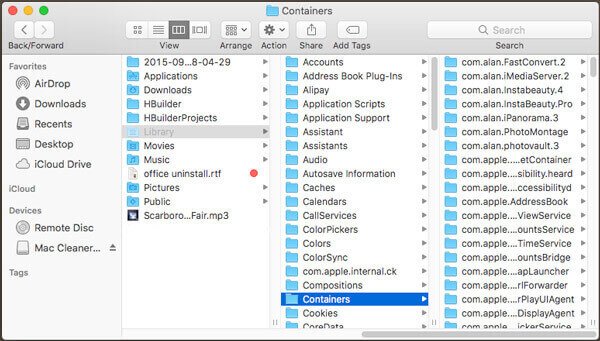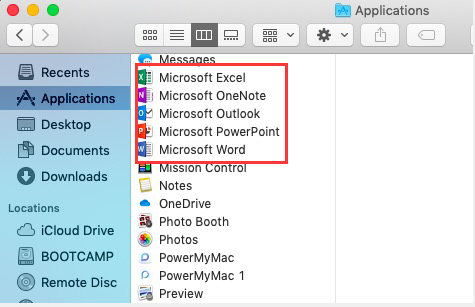

- #Complete uninstall office 2011 mac how to#
- #Complete uninstall office 2011 mac for mac#
- #Complete uninstall office 2011 mac serial#
I didn’t want to be in violation of my service agreement with Microsoft so I decided to deactivate the serial from 2 of those 3 computers.Īfter a great deal of searching with my incredible Google skills I found the only way to deactivate a serial in Microsoft Office 2011 for Mac.


#Complete uninstall office 2011 mac for mac#
I didn’t even mean to find this out and, after purchasing 5 different copies, I mistakenly used the same serial on 3 different computers and have not received any errors when working in the program simultaneously. The easiest way to completely uninstall Office 2016 for Mac and ensure that no files or folders are left behind is with an uninstaller app. This is probably because they also did not put any mechanism in place to stop you from installing your version of Microsoft Office 2011 for Mac on as many computers as you want.

Review the selected items and confirm the removal of the Microsoft Outlook application. Just need to know where to go in your computer. Just to benefit the people who search for this subject, I found that you just need to type remove office in the spotlight and the application will come up. Find and select Outlook from the list of apps. Use App Cleaner to completely remove an application that you want to remove.
#Complete uninstall office 2011 mac how to#
I found some in the system- and user-caches, as well as in /private/var/folders, if you really want all traces gone, you'll have to track those down as well.Microsoft did not make it very easy to deactivate a product key for Microsoft Office 2011 for Mac. Here is how to uninstall Outlook with App Cleaner & Uninstaller: Download and run App Cleaner & Uninstaller. You will also find temporary files, I had them in four different locations, but your mac will clean those up eventually. You can get data from Access tables in Word 2011 and Excel 2011 in Mac Office. ~/Library/Application Support/Microsoft AU Daemon Download and run the license removal tool. In your User-Library: ~/Library/Preferences/ In your System Library: /Library/Application Support/Microsoft/MAU2.0/Microsoft AutoUpdate.app Some of the directories have spaces in their names, make sure to type those spaces with a leading backslash, if you use rm -Rf to remove those! You should remove those folders to completely remove the application and all it's traces. Choose the program you want to uninstall, but in this way, you will delete the main. Programs and Features, then select the program name and click on Uninstall button. Start any of the Office applications supported by this topic. Using the control panel is the easiest way we usually take to uninstall program, click the start button and choose control panel, then go to. It used to be a thing in Outlook 2011 for Mac that if the mailbox was too big. To resolve, complete the following: In Adobe, click Tools. Microsoft Auto Update had 19 files on macOS in multiple directories, after I'd already removed it from ~/Library/Containers. Under value data, type the complete location for the PST file you. Leave Office applications closed while you go through this process. Before you remove Office for Mac 2011, quit all Office applications and make sure there's nothing in Trash that you want to keep. Once you've removed everything, empty the Trash and restart your Mac to complete the process. On macOS Mojave 10.14.1, this is what I found: To uninstall Office for Mac 2011 move the applications to the Trash.


 0 kommentar(er)
0 kommentar(er)
